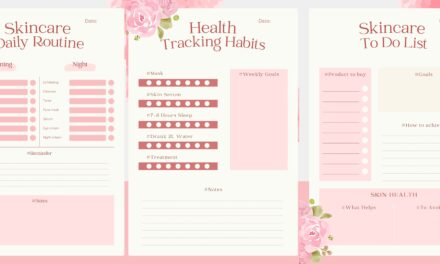Introduction
Let’s be real, getting kids to eat healthy can sometimes feel like trying to bathe a cat. From the moment they’re old enough to say “no,” feeding them turns into a full-on adventure. But don’t worry, we’re in this together. This guide will walk you through everything you need to know about raising little nutrition for kids from toddlers to tweens. We’ll cover what they should eat, what to avoid, how to deal with picky eaters, and how to make healthy choices a lifelong habit.
Nutrition during childhood isn’t just about growth. It lays the groundwork for a lifetime of good health. Think of it like building a house. You wouldn’t start with a shaky foundation, right? The same goes for your child’s body. A strong start with proper nutrition ensures that their brain, bones, and immune system are built to last. Let’s dive into the delicious details.
Understanding the Importance of Nutrition for Kids
Why Early Nutrition Matters
From day one, what kids eat affects how their bodies grow and their brains develop. During the first few years, children go through rapid physical and cognitive changes. Nutrition is like fuel it powers their development, from head to toe.
- Brain development: The brain grows fastest during the first three years of life. Nutrients like omega-3 fatty acids, iron, zinc, and vitamin D play huge roles here.
- Immune system: A strong immune system starts with a good diet. Kids who eat more fruits, veggies, and lean proteins tend to get sick less often.
- Growth: Ever heard someone say, “They’re growing like a weed”? That’s not just a saying kids need protein, calcium, and vitamin A to grow strong bones and muscles.
Early nutrition also shapes taste preferences. Give them broccoli and blueberries now, and they’ll be more likely to reach for them later in life. It’s all about building that positive relationship with food early on.
Long-term Impact of Nutritional Choices
You’ve probably heard that “we are what we eat,” and for kids, this couldn’t be more true. Poor nutrition in childhood can lead to obesity, diabetes, and heart problems down the road. But the good news? It’s totally preventable.
- Obesity risk: When kids regularly eat high-sugar, low-nutrient foods, their risk of obesity shoots up.
- Academic performance: There’s a clear link between nutrition and brain function. Kids who eat balanced meals tend to perform better in school.
- Mental health: Believe it or not, food affects mood. A healthy diet can reduce anxiety and improve overall emotional well-being.
The habits you help your kids form today will follow them for life. Feed them right, and you’re giving them the tools to live stronger, longer, and happier.
Age-Specific Nutritional Requirements
- Toddlers (1–3 years): They need high energy but in small packages. Frequent meals and snacks packed with nutrients are key.
- Preschoolers (4–5 years): These little adventurers need balanced meals that support rapid growth and brain development.
- School-age Children (6–12 years): It’s all about focus, energy, and immune strength. Meals should support long school days and after-school activities.
The Building Blocks of a Healthy Kid’s Plate
Fruits and Vegetables
- How Much is Enough? Aim for at least five servings a day. A serving can be a small apple, a half-cup of cooked veggies, or a handful of berries.
- Fun Ways to Add More to Their Diet: Smoothies, veggie-based muffins, or even “ants on a log” (celery, peanut butter, raisins) are game-changers.
Whole Grains vs. Refined Grains
Swap white bread for whole grain, sugary cereals for oatmeal, and white rice for quinoa or brown rice. Whole grains offer more fiber and nutrients.
Protein Sources for Growth and Energy
Think beyond chicken nuggets. Add beans, eggs, cheese, fish, yogurt, and lean meats to keep meals varied and fun.
Healthy Fats and Why They’re Not the Enemy
Fats help kids absorb vitamins and build healthy brains. Go for nuts, seeds, olive oil, and fatty fish like salmon.
Hydration – The Overlooked Nutrition for kids
Importance of Water for Kids
Water is often overlooked, but it’s one of the most crucial nutrients for growing bodies. Every cell, organ, and system in your child’s body depends on it.
- Brain function: Dehydrated kids can get tired, cranky, and lose focus easily.
- Digestive health: Helps prevent constipation and supports healthy digestion.
- Temperature control: Kids overheat quickly—especially when active. Water helps regulate their body temperature.
How much water do kids really need? A good rule of thumb is:
- Toddlers: 4 cups per day
- Kids 4–8: 5 cups per day
- Kids 9+: 7–8 cups per day
These numbers go up in hot weather or if your child is very active. Encourage sipping water throughout the day instead of chugging it all at once.
Healthy Drink Alternatives
Sure, juice boxes are convenient, but many are packed with sugar. There are better choices:
- Infused water: Add slices of fruit, mint, or cucumber for a fun twist.
- Milk: A great source of calcium and vitamin D—just choose low-fat for older kids.
- Smoothies: Blend fruit, yogurt, and greens for a filling, hydrating treat.
Avoid sodas, sports drinks, and artificially flavored drinks. They’re not doing your kids any favors.
Common Nutritional Pitfalls to Avoid
- Excess Sugar: Watch out for hidden sugars in yogurts, sauces, and cereals.
- Processed Foods: These often contain artificial ingredients, excess salt, and little nutrition.
- Skipping Meals: Breakfast is especially important. It sets the tone for the day and helps with focus and energy.
Healthier Swaps for Common Snacks
Replacing processed snacks with whole-food alternatives doesn’t mean you have to kiss convenience goodbye.
Here are some swaps:
| Processed Snack | Healthier Alternative |
|---|---|
| Potato chips | Air-popped popcorn with a dash of olive oil |
| Sugary cereal | Oats with fresh fruit and honey |
| Fruit snacks | Sliced real fruit or freeze-dried fruit |
| Soda | Sparkling water with lemon or berries |
| Ice cream | Frozen banana “nice” cream |
These swaps still taste great but pack in more nutrients and fewer chemicals. It’s a win-win.
Planning Balanced Meals Nutrition for Kids
Creating a Weekly Meal Plan
Meal planning might sound boring, but it’s the secret sauce to stress-free, healthy eating. It saves time, money, and most importantly—sanity.
Start with a simple formula:
- Protein + Veggie + Whole grain + Healthy fat
- Add fruit or dairy to round it out
Example Weekly Meal Plan:
| Day | Breakfast | Lunch | Dinner |
|---|---|---|---|
| Monday | Scrambled eggs + toast | Turkey sandwich + apple | Grilled chicken + quinoa |
| Tuesday | Oatmeal + banana | Pasta with veggie sauce | Baked fish + sweet potato |
| Wednesday | Yogurt + berries | Chicken wrap + veggies | Stir-fry + brown rice |
Involve your kids in the planning process—they’re more likely to eat what they helped pick.
Involving Kids in the Process
- Cooking Together: Let them stir, pour, or chop (with supervision). They’re more likely to try what they help make.
- Grocery Shopping as a Learning Opportunity: Teach them to read labels, pick colorful produce, and make healthy choices.
School Lunch Strategies
- Packing Nutritious and Exciting Lunchboxes: Mix and match proteins, whole grains, fruits, and fun snacks like hummus with veggie sticks.
- Dealing with Picky Eaters: Keep portions small, include one familiar item, and let them help pack their lunch.
Incorporating Nutrition for kids Education at Home
Teaching Kids About Healthy Choices
Education starts at home—and teaching kids about food is just as important as teaching them to read. The more they know, the more likely they are to make good choices on their own.
Ways to teach nutrition for kids:
- Use simple language: Explain what nutrients do for the body. For example, “Protein helps build muscles like superheroes.”
- Turn grocery shopping into a lesson: Let them help pick out fruits and veggies and read labels.
- Cook together: It builds skills and appreciation for healthy food.
- Use stories and games: Picture books, YouTube videos, or apps can make learning fun and memorable.
Knowledge empowers kids to choose the apple over the candy. It’s all about making it relatable and exciting.
Managing Nutrition for Kids with ADHD or Autism
Kids with ADHD or autism may have sensory issues or behavioral patterns that make mealtimes tricky. But nutrition still plays a huge role in their development and well-being.
For ADHD:
- Avoid artificial colors, preservatives, and added sugars—they can trigger hyperactivity.
- Boost omega-3 intake with fatty fish or supplements.
- Ensure balanced blood sugar levels with steady, whole-food meals.
For Autism:
- Introduce new textures and flavors gradually.
- Use visual aids or food charts to encourage trying new foods.
- Consider working with a nutritionist who understands sensory diets.
With the right tweaks and support, even restrictive diets can be well-balanced and nutritious.
Conclusion with healthy nutrition for kids
Feeding your kids well doesn’t mean perfection—it means intention. Offer variety, create positive mealtimes, and stay patient. Building healthy nutrition habits is a marathon, not a sprint. But every meal is a chance to make a difference. You’ve got this!
FAQs
1. What are the best vegetables for kids?
Carrots, cucumbers, broccoli, sweet potatoes, and peas are usually kid-friendly and packed with nutrients.
2. How do I get my child to eat more protein?
Incorporate protein into meals they already enjoy—like adding beans to tacos or eggs into breakfast muffins.
3. Are fruit juices healthy for kids?
In moderation, sure. But whole fruits are better. Juice lacks fiber and can spike blood sugar.
4. What is a balanced diet for a child?
A mix of fruits, veggies, whole grains, lean proteins, and healthy fats—plus plenty of water.
5. Can my child be vegetarian and still get proper nutrition?
Absolutely! With careful planning and variety, vegetarian kids can thrive. Beans, tofu, lentils, dairy, and eggs are great sources.
Learn more about early nutrient for childhood







Great post! I really enjoyed reading this and learned a lot. Thanks for sharing!
This is exactly what I was looking for—thanks for the helpful tips!
Very well written. Looking forward to more posts like this!
Thanks for the valuable information. It was easy to understand and super useful.
I love how you explained this so clearly. Subscribed for more!
This post really resonated with me. Appreciate your honesty and insights.
Great post! I really enjoyed reading this.
Very informative, thanks for sharing!
Hello!
This post was created with XRumer 23 StrongAI.
Good luck 🙂